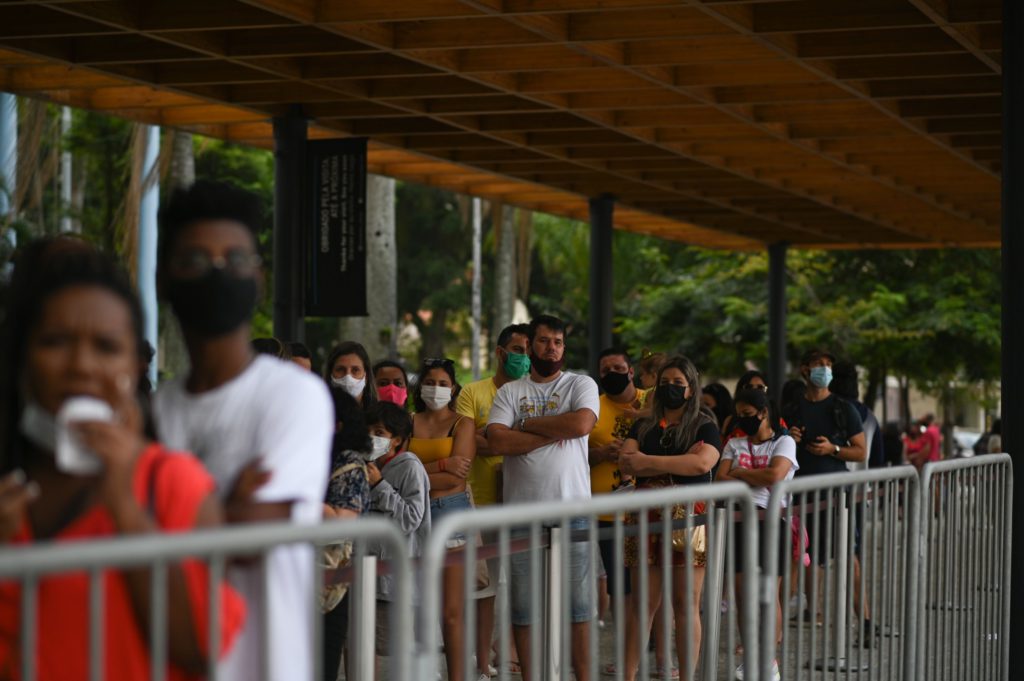(Bloomberg) — Brazil’s central bank pledged to deliver a third consecutive interest-rate hike of 100 basis points next month, saying such a pace of monetary tightening is convenient to bring inflation back to target.
The bank on Wednesday lifted the Selic to 6.25% from 5.25%, as forecast by nearly all economists surveyed by Bloomberg.
Board members said that an even more restrictive monetary policy is needed to control inflation that’s nearing 10% amid pressures from services and goods, including food and fuels.
“For the next meeting, the Committee foresees another adjustment of the same magnitude,” policy makers wrote in a statement accompanying their decision.
“This pace is the most appropriate to guarantee inflation convergence to the target at the relevant horizon and, simultaneously, allow the committee to obtain more information regarding the state of the economy and the persistence of shocks.”
Brazil’s central bank has launched the world’s most aggressive tightening cycle this year, raising borrowing costs by 425 basis points since March, with only limited impact on prices.
Not only has annual inflation accelerated since then, but expectations for 2022 continue to rise further above target. Increasing the cost of living is a severe drought that has made electricity more expensive, as well as concerns about growing public spending that have weighed on the currency.
The nation’s currency strengthened as much as 0.6% to 5.2571 per dollar on Thursday as risk-on sentiment pushed emerging-market currencies broadly higher.
Swap rates on the long-end of the curve fell 9-11 basis points, while the shortest maturities edged lower.
What Bloomberg Economics Says
“Brazil’s central bank stuck to the plan outlined in its previous meeting, pledged another similar rate hike at its October gathering and slightly increased the hawkish tone of its post-meeting statement.
The bank cautioned that it could adjust its October hike plans if economic conditions warrant. This will keep upcoming readings on inflation and the weekly figures on inflation expectations in the spotlight.
Upward surprises could lead markets to price in a larger rate increase.”
–Adriana Dupita, Latin America economist
Read more here
Annual inflation hit 9.68% in August, the fastest since February 2016.
Eight out of nine product and service categories surveyed by the nation’s statistics institute rose on the month. Services have become more expensive as activity in the sector returns to normal, policy makers wrote in the statement.
Strong industrial good price increases will persist in the short-run, they added.
The central bank projected inflation to close 2021 at 8.5%, before slowing to 3.7% next year — above the respective targets of 3.75% and 3.5% for each year.
“They are signaling they are comfortable with the current pace of tightening,” said Alberto Ramos, chief Latin America economist at Goldman Sachs Group Inc.
“It isn’t clear if it is enough to tame inflation expectations.”
Commodities Bet
Policy makers led by Roberto Campos Neto said that the delta Covid-19 strain poses risks for Asian economies that could reduce global commodity prices, potentially producing “a lower-than-projected inflation in the baseline scenario.”
“The bank is clearly betting that commodity costs will help cool off inflation,” said Sergio Vale, chief economist at MB Associados.
“This is true, though the bank may be more optimistic that it should.”
Meanwhile, the Brazilian economy is further reopening as the pandemic eases in the country. Brazil’s seven-day rolling average for virus-related deaths has fallen below 600, compared with roughly 3,000 in April, and some states have begun immunizing teenagers.
The country’s most recent economic indicators show positive trends in activity, policy makers wrote.
As a result, there is no need for revisions in growth forecasts showing a robust recovery in the second half of the year.
Brazil’s rate decision came hours after the U.S. Federal Reserve maintained the target range for its benchmark policy rate at zero to 0.25% while signaling it could begin scaling back asset purchases in November.
It also came one week after Campos Neto said policy makers won’t react to every piece of high-frequency data.
Investors correctly interpreted the remarks as a sign the bank would refrain from speeding up the pace of rate hikes.
“Our interpretation is that the Selic should be raised to at least 8.5%” at the end of the cycle, said Rodolfo Margato, an economist at XP Investimentos.
“The central bank recognizes heightened uncertainties and indicates that it’s important to follow inflation and economic data to hammer down the total rate increase.”
(Updates with Thursday morning market levels in fifth paragraph.)
More stories like this are available on bloomberg.com
©2021 Bloomberg L.P.











